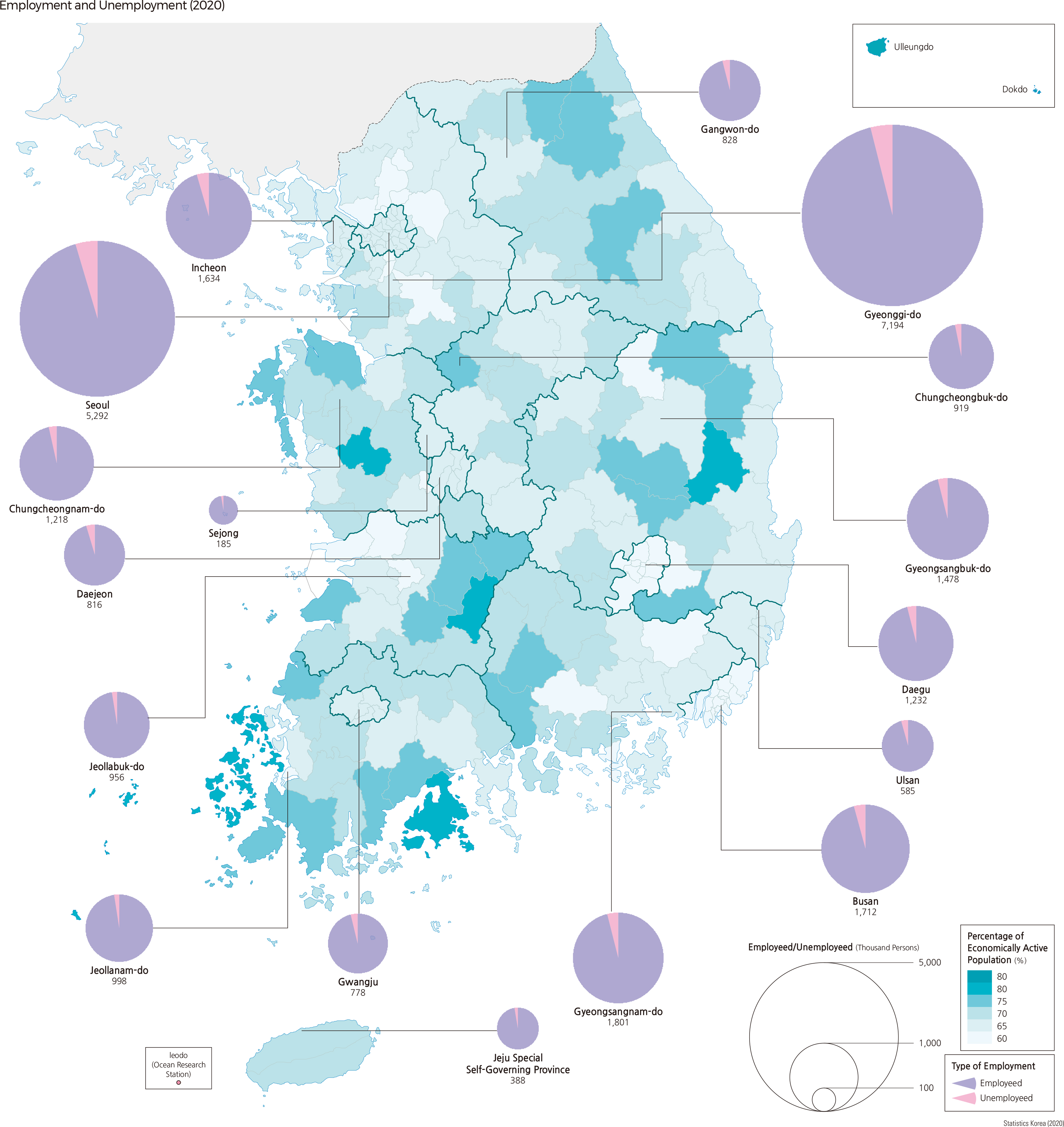English III 2021
Labor refers to any work performed by humans, including all operations in the agriculture, manufacturing and service industries that generate employment. The analysis of employment will reveal information about human resources and the status of labor market activities. It is important to monitor the growth and decline of the labor market, which directly impacts household income. The Korean economy after the Korean War can be characterized by the processes of industrialization, service economization, globalization, and knowledge-based informationalization. Until the 1960s, the Korean economy was classified as a typical less developed economy that was largely based on its primary industrial sector. Since then, with strong government initiatives to industrialize the country, the manufacturing sector has grown rapidly and provided more jobs for young and middle-aged employees. Although the manufacturing industry started to slow down after it reached its peak in the 1990s, the service industry experienced steady growth, and the Korean economy eventually became mostly service-oriented. Subsequently, several employment changes have been made in the labor market following the change from the manufacturing industry to the service industry. As there was more demand for an intellectual labor force than a physical labor force, the demand for higher education in employment increased. While domestic workers avoided physical labor in manufacturing jobs, more foreign workers found jobs in the manufacturing sector. Increased employment in the service sector resulted in more female employees participating in economic activities, particularly as more women obtained higher education degrees. As a result, the rate of female employment has increased in professional, technical, and management positions. During the 1990s, Korea's active participation in globalization, advanced communication skills, and faster flow of information coupled with knowledge combined to gain new growth motivations that accelerated the rate of higher education among employees. The average age of employees has increased since 1983 when the crude birth rate, which remains low, fell below 2.1. A higher unemployment rate for young workers became a social issue. In recent years, employment prospects have become pessimistic as investors' confidence has shrunk due to the worldwide economic crisis and the consequential slow rate of economic growth. The Korean government has made multi-faceted efforts to provide good quality employment opportunities for both young and mature employment seekers. |

